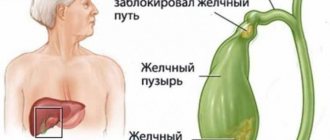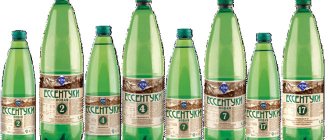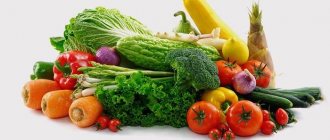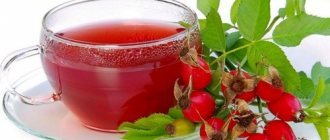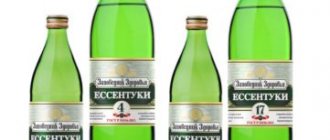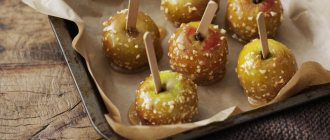Herbal medicine for pancreatitis
An inflammatory process in the pancreas, accompanied by severe pain in the lower part of the stomach, sometimes in the area of the kidneys and even the heart, is called pancreatitis.
The acute symptoms of this disease are often confused with problems with the heart. A problem in the functioning of the pancreas is diagnosed by its enlargement during an ultrasound examination. Some symptoms of the disease may include vomiting and diarrhea. Sometimes there are surges in pressure.
If you do not conduct a timely examination and do not start proper treatment, the disease can cause jaundice and lead to kidney failure. All types of dough, canned food, fish soups, smoked foods, sweets, coffee and carbonated drinks should be excluded. Eliminate foods that cause fermentation in the stomach. A dietary diet is mandatory, during which the consumption of alcohol, spicy and fried foods is completely prohibited.
Fasting for 24 hours is ideal, and should be discussed with your doctor. Drinking regimen – 1.5 liters of liquid per day.
During the period of remission, herbalists recommend including oats for the pancreas in any form in the menu. You can eat oatmeal 3 times a day without salt and oil. But the most useful is still the decoction and healing oatmeal jelly.
Description of the disease
The main cause of cholecystitis is impaired excretion of bile components from the gallbladder. This phenomenon is called stagnation of bile and can provoke the formation of stones in the organ, which will only aggravate the pathological process, preventing bile outflow, and in some cases, clogging the bile ducts. But the following factors can contribute to poor bile flow:
- incorrect and irregular diet;
- food abuse;
- passive lifestyle, which inhibits natural processes in the body;
- changes in the microflora of the gallbladder that occur as a result of pathogenic microorganisms entering the internal organ;
- the period of gestation, which is more typical for women of the older age group;
- genetic predisposition.
According to the form of the course, cholecystitis is divided into:
Spicy
The acute form of the disease is considered the most serious, which is often characterized by the formation of gallstones. Then the disease begins to be called cholelithiasis or calculous cholecystitis.
Particularly dangerous is the accumulation of stones in the gall bladder and their subsequent penetration into the ducts, thereby disrupting the outflow of bile from the organ. Often this form of the disease requires urgent medical intervention.
Signs of acute cholecystitis are:
- painful sensations in the right side of the abdomen, acute and cramping in nature;
- presence of a bitter taste in the mouth;
- increase in body temperature values;
- nausea ends with a gag reflex, which does not relieve;
- sudden attacks of weakness;
- acquiring a jaundiced tint to the skin of the face.
To enlarge the picture, click on it.
Chronic
The chronic form of cholecystitis is characterized by a calmer course and is not accompanied by the formation of gallstones. The duration of development of the disease can reach several weeks. Sometimes pancreatitis may occur against its background, and there is also a possibility of exacerbation of existing ailments.
Symptoms of chronic cholecystitis include the following:
- a feeling of heaviness in the stomach that occurs after finishing a meal;
- dull painful sensations;
- bitter taste in the mouth or bitter belching;
- lack of appetite;
- digestive system disorders;
- deterioration of general condition, accompanied by severe weakness, dizziness and poor health.
Due to the mild severity of the inflammatory process in the chronic form of the disease, the diagnosis of pathology comes down to a comprehensive examination, for the purpose of which mainly instrumental techniques are used. The attending physician may prescribe;
- Ultrasound of the abdominal organs;
- X-ray of the gallbladder using a contrast agent.
Homeopathy - an assistant in the treatment of illness
Along with drug treatment, a unique diet and nutrition regimen, therapy includes an oat decoction for pancreatitis, prepared at home.
Several versions of the healing drink are known: from fermented oats and prepared by soaking.
The first method is soaking
- It is necessary to pour the cereal along with the husk for 12 hours.
- In the morning, drain the liquid and rinse the soaked cereal under running water.
- Bring the drink to a boil in the proportion of 1 cup of grain per 1 liter of water. Simmer over low heat for 4 hours.
- Drain the liquid, add new liquid and bring to a boil again. Switch off.
- Strain the broth. This amount is enough for a two-day course. Keep refrigerated.
This remedy for the treatment of the pancreas must be drunk for two months before meals 2-3 times a day. After neutralizing painful symptoms, take a month's break. The course can be carried out 2 times a year as a prevention of the disease.
Fermented cereal method
The way to properly make a decoction for the treatment of this disease using fermented cereal requires adding whey to the recipe or vinegar diluted in a proportion of 1 teaspoon per liter of water. The decoction is prepared as follows: pour 1 cup of oats with 2 cups of the above ingredient (vinegar or whey). Leave for 8 hours. In the morning, rinse, add a new amount of water, and simmer for 2 hours after boiling. Add 1 liter of water. Boil. Strain. Reception – 2 days.
These methods can be alternated. During the course, adhere to a diet and proper drinking regimen. The method of soaking the cereal is extremely important. Thanks to it, harmful phytates (phytic acid), which reduce the body’s absorption of calcium and other beneficial minerals and trace elements, are neutralized. This effect is also achieved by sprouting and fermenting the seeds of the plant.
Herbs for cholecystitis
The best herbs for cholecystitis:
- Immortelle. Preparing the decoction is not difficult: we take the crushed flowers of the raw material, add corn silk and St. John's wort. Boil water in a proportion of 200 ml, add one tablespoon of the mixture to it. Cook the mixture for about 30 minutes, cool. Be sure to filter it. The decoction should be taken 20 minutes before lunch or dinner, one-third of a 200 ml glass.
- St. John's wort. Method for preparing the decoction: take a tablespoon of raw materials, pour boiling water into 20 ml. Leave for 20 minutes, strain the resulting broth. Take 20 minutes before lunch or dinner, strained, 0.25 regular glasses per 200 ml.
St. John's wort and immortelle have a choleretic and anti-inflammatory effect on the body.
- Mint. Mint decoctions relieve pain and are used to treat the digestive system. Mint infusions are used for heartburn and belching, and for intestinal spasms. Mint has an anti-inflammatory effect and is a choleretic drug. Recipes for mint decoctions are simple: 1 tablespoon of the raw material is poured with boiling water (200 ml). The composition is cooled and filtered, you can drink half a glass before meals 20 minutes twice a day.
- Chamomile. Chamomile coats the intestines and relieves spasms. It can reduce irritation and relieve inflammation. In the treatment of the gastrointestinal tract, chamomile is used for gastritis, diarrhea, colitis, as well as for diseases of the gallbladder. Chamomile is sold in pharmacies in the form of bags in which finished raw materials are packaged. The bags are brewed according to the principle of simple tea: just put 1 bag in a mug or glass and pour boiling water over it. Cool and drink three times a day before meals.
Choleretic herbal remedies are represented by the following herbs, in addition to those listed above:
- oregano;
- birch, wormwood, yarrow – ready-made collection;
- calendula, knotweed, oregano, mint – ready-made collection;
- dandelion;
- sage as part of the collection;
- lemon balm as part of the preparations;
- horsetail as part of the collection.
Treatment of cholecystitis with herbs
When treating chronic diseases, modern medicine often resorts to unconventional methods. Cholecystitis is a common disease of the digestive system. This is an inflammation of the walls of the gallbladder that requires long-term treatment. Long-term use of medications has a detrimental effect on the liver, so herbal medicine is recommended for the patient.
Herbs for cholecystitis are gentle and effective. You can buy them at any pharmacy. But in order to achieve the desired result and not cause harm, you need to consult a doctor. The specialist will select the correct composition and draw up a treatment plan.
Features and purpose of herbs
Treatment of cholecystitis with herbs has various purposes. For this reason, each patient needs to select herbal medicine individually, taking into account existing diseases, the severity of the pathology and its spread.
Herbs for cholecystitis are used according to the following rules:
- In order to avoid stagnation of bile, choleretic plants are used.
- To relieve spasms in the bile ducts, herbs that have an antispasmodic effect are used.
- To combat infections and parasites that cause inflammation, you can use plants with antibacterial, antiviral and anthelmintic effects.
- In case of pathological changes in the functioning of the liver, plants with hepatoprotective properties have an excellent effect.
- If stones are diagnosed, then herbs with a litholytic effect (reducing contractility) are suitable.
Under no circumstances should you attempt to dissolve gallstones on your own, since crushed stones can easily block the bile ducts, causing hepatic colic.
In addition, the edges of the stones can be sharp, so injury to organs is possible. This poses a threat to human health and life.
Plants with choleretic effect:
- barberry;
- birch leaf;
- corn silk;
- tansy;
- immortelle;
- centaury;
- mint.
In this case, there are two types of choleretic plants:
- Cholekinetics. They increase the tone of the biliary tract and the organ itself, due to which bile begins to actively drain. This includes tansy and corn silk.
- Choleretics. They increase the flow of bile, but due to the increase in its composition of water. These are mint and birch leaves.
Based on this, cholecystitis is treated with herbs in different ways. If dyskinesia of the bile ducts is diagnosed of the hypertensive type with the presence of stones, then only choleretics can be used, since cholekinetics in this situation can be harmful to health - the stones will begin to move, can block the ducts and cause severe painful phenomena.
For acalculous cholecystitis with hypotension, it is better to use cholekinetics. They will help increase the tone of the ducts and organ, and will also remove stagnant bile.
Antispasmodic herbs:
- anise;
- caraway;
- St. John's wort;
- fennel;
- chamomile;
- cross;
- dill;
- Potentilla goose.
Chamomile flowers
Can be used in the form of tea or infusion. Relieves inflammation well. Sometimes chamomile decoction is effectively used as an enema.
Plantain
Reduces the amount of cholesterol in the blood, which contributes to the formation of stones in the bladder. Plantain seeds relieve inflammation and eliminate spasms, and leaves promote the discharge of bile. In this case, the seeds can be added to food. The main thing is to use the product in an amount of no more than 4 tbsp. in a day. Plantain leaves should not be taken for a long time by people prone to blood clots.
Recipes for restoring gall and pancreas
In alternative medicine there are many recipes that help achieve remission for cholecystitis and pancreatitis. Folk remedies are safe and do not have an aggressive effect, but in case of organic intolerance they can lead to the development of an allergic reaction.
It is better to resort to the help of preparations, since multi-component compositions act faster than single-component ones. They improve the condition of the gland, gall bladder, and relieve pain.
The following recipes help restore the normal functionality of the pancreas and gallbladder:
| Ingredients | How to cook and drink |
| 20 g elecampane, 10 g peppermint, 10 g string | For 150 ml you need a teaspoon of the mixture. Brew overnight (preferably in a thermos). In the morning, drink half on an empty stomach, and drink the second part 20 minutes after dinner. For a good therapeutic effect, you need to drink it for at least 2 months. |
| Mix 10 g of immortelle with 15 g of calendula flowers | Add a tablespoon of the mixture to 400 ml of liquid. Leave for 5 hours. Take 50 ml three times a day. Next 10 days break, repeat. You can drink the decoction for prophylactic purposes - reduce the dose by half. |
| Sandy immortelle, birch leaves, centaury, St. John's wort and mint are mixed in equal proportions. | Add 2 teaspoons of the mixture to 0.5 liters of water. Leave for 24 hours, filter. Drink 3 tbsp. every day before meals. Treatment lasts 14 days. After a week's break, you are allowed to take a second course. |
To speed up the production and discharge of bile, decoctions with sandy cumin, tansy, peppermint, and barberry are consumed. In order to obtain an antispasmodic effect, common fennel leaves, chamomile/field chamomile, St. John's wort, marsh cudweed, dill seeds, aniseed belladonna, and belladonna are added to the mixtures.
Decoctions with the addition of belladonna are drunk with caution, since this is a poisonous plant; if the permissible dosage is exceeded, there is a high probability of poisoning.
The diagnosis of calculous cholecystitis is made by a doctor based on an examination of patients. The disease is caused by inflammatory processes of the gallbladder; on ultrasound, stones of varying sizes and quantities are clearly visible in the ducts of the organ or in its lumen. The disease is characterized by an acute or chronic form: in the latter case, it subsides into remission or manifests itself again with abdominal pain. The localization of pain is on the right, under the ribs. The disease must be treated by a gastroenterologist. If the disease is neglected, there is a danger of blockage of the bladder neck and bile duct: jaundice and biliary colic begin. You can treat yourself at home using folk remedies as part of complex therapy.
Pharmacological properties of herbs
The effectiveness of herbs has been tested for cholecystitis for many generations - not only by healers and traditional healers, but also by gastroenterologists. Conducted medical studies have convincingly proven that most medicinal plants have the following pharmacological properties:
- elimination of spasm of the bile ducts - including through relaxation of smooth muscles;
- correction of rheological properties - reducing the viscosity of bile;
- relief of the patient’s well-being - relief of pain impulses in the abdomen;
- improving the outflow of bile - accelerating its movement into the intestinal loops;
- antimicrobial effect – fight against pathogens that provoke inflammatory changes in the walls of the bile organ during cholecystitis;
- acceleration of regeneration of damaged cells;
- dissolution of small stones.
For each case of cholecystitis, the specialist will select herbs separately - in direct dependence on the cause of the disease and the severity of the sick person’s condition. Indeed, with the infectious variant of the pathology, powerful suppression of the inflammatory focus is required. Whereas with the obstructive form, it is necessary to eliminate the blockage - a stone in the gallbladder ducts.
Treatment of calculous cholecystitis
Methods to get rid of the disease include:
- Following a diet (5 P), which focuses on excluding fatty foods rich in carbohydrates from the diet. Patients can eat vegetables and meat (lean) steamed or boiled. The same applies to vegetable dishes. Some fruits are excluded from the diet. Food should be small and frequent. Alcohol, coffee and strong tea are excluded from drinks. In addition, orange and apple, tomato juices.
- Operation. Surgical intervention is mandatory in the following cases:
- large stones in the gall bladder;
- symptoms of biliary colic: attacks occur more frequently and are not controlled by medications;
- cholangitis (purulent);
- empyema.
- Drug treatment – patients are prescribed medications that must be taken as prescribed by the attending physician (chophytol, Creon, etc.).
Treatment of cholecystitis using traditional methods. Is it possible to cure a disease forever with the help of herbs? Rather, traditional medicine and herbal remedies should be used as part of complex therapy prescribed by a doctor.

